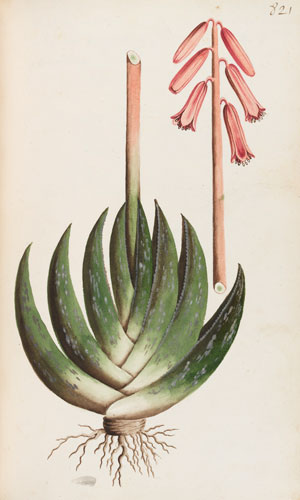Science and Nature

MS 984: Simon van der Stels' journal of his expedition to Namaqualand, 1685-1686
The papers of several scientists are held in Manuscripts & Archives:
- MS 2943: Baldassare Boncompagni (PDF 1.01MB) (1821-94), a pioneer historian of science and mathematics. This remains uncatalogued and unavailable for consultation
- MS1492 et al: Sir William Rowan Hamilton (1805-1865) became Professor of Astronomy in Trinity College Dublin in 1827. He discovered quaternions: a non-commutative number system that extends the complex numbers
- MSS 10372-10380 et al: Professor Francis George Fitzgerald (1851-1901) was appointed Professor of Natural and Experimental Philosophy at Trinity College Dublin in 1881. He was the first to suggest a method of producing radio frequency waves
- MSS 3641: William Henry Harvey (1811-1866) was Professor of Botany in Trinity College Dublin, 1856. His letters describing journeys to Ceylon, Australia, Capetown are resources for the study of science and nature
- MSS 4008-4014 et al: Henry Horatio Dixon (1869-1953), Professor of Botany from 1904 until 1949. He wrote extensively on the biology of plants and developed the cohesion-tension theory of water and mineral movement in plants
- MSS 2289-2297b et al: John Joly (1857-1933), a physicist and geologist who held the Chair of Geology and Mineralogy in Trinity College Dublin from 1897 until his death. He is famous for his part in the development of radiotherapy in the treatment of cancer. He also invented the first successful colour photographic process called the "Joly colour process"
- MSS 10386-10393: Ernest Thomas Sinton Walton (1903-1995) became Professor of Natural and Experimental Philosophy in Trinity College in 1946 and along with John Cockcroft won the Nobel Prize in Physics in 1951 for their experiments on splitting the atom
The study of nature is supported by several items of interest within the Library:
- MSS 984 and 1017: Simon van der Stel, account of his visit to Namaqualand in 1679 and an Icelandic manuscript dating from 1724. Both contain descriptions of animals, plants, fish, birds, reptiles and, in the case of MS 1017 mythical animals that are accompanied by colourful and detailed drawings in pen and ink
- MS 1706/1-2: a tulip bulb catalogue from the period in Dutch history known as "Tulip mania" containing coloured drawings of tulips and bulbs, with their prices, from 1673
- MSS 10901-10922: the papers of Henry Chichester Hart (1847-1908), a botanist and ornithologist who kept detailed diaries of notes and drawings of the local flora and fauna
- MSS 10514-10519, 10472-10484: Richard William George Hingston (1887-1966) was a naturalist and physician who travelled to Africa, India and with the Everest expedition of 1924. Hingston’s collection is made up of detailed diaries, photographic negatives and glass plate slides describing the animals, plants, archaeology and people he encountered
- MS 10680: the records of the Royal Zoological Society (later Dublin Zoo) from 1835-1953, include minute books, council committee proceedings and press cuttings

